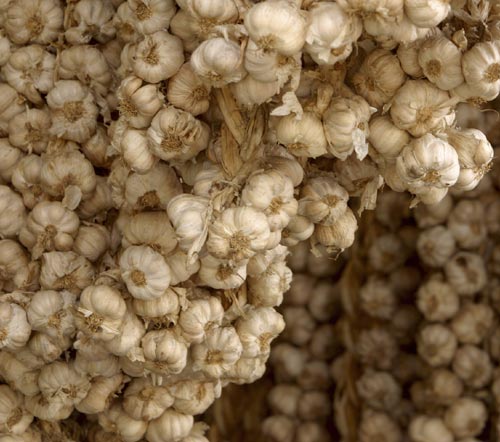Environmental Requirements for Garlic

Are you in need of in-depth knowledge on onion and garlic production? If yes, we are a call away. Our service chatter includes: Onion seedlings, Garlic seedlings, Farm planning services, Soil testing, Drip irrigation installation and maintenance, Agronomic support, Onion and Garlic value pack and Farm management. For free consultation, placing orders or booking a visit with an agronomist, please contact us via Call or what’s app +254703982228, Email: Info@oniondoctor.co.ke.
Garlic (Allium sativum L.) is in the onion family. For thousands of years it has been grown for culinary and medicinal uses. Garlic grows in a wide range of conditions.
Types and Varieties: There are two types of garlic, hard-neck and soft-neck. Hard-neck garlic produces false flower stalks, called scapes. It typically has a half dozen cloves per bulb, plus or minus, while soft-neck types have twice that many. Soft-neck garlic dominates commodity production. Soft-neck garlic generally has a longer storage life than hard-neck and is easier to braid.
After centuries of cultivation garlic has lost the ability to produce seeds so it is vegetatively propagated by saving bulbs from year to year and planting the cloves. The small bulbils produced on hard-neck scapes can be used for propagation, but it takes several years of planting and selection to achieve marketable size bulbs.
Soil Fertility: A well-drained soil with good tilth and plenty of organic matter is ideal for garlic. Excess moisture, compaction or droughty conditions will reduce yields. The optimum soil pH is between 6 and 7.
Planting: Many different planting arrangements are used by growers depending on their irrigation, mulching and weed control systems; spacing too close can reduce bulb size while spacing too far apart reduces yield per area of land. Planting arrangements include: 2 row beds 30 inches apart on center with 6 inch spacing in and between rows; 3 or 4 rows per bed, with 6 to 8 inches between and within rows; single rows spaced 24 to 30 inches with 6 inch spacing in the row. Wide row spacing between rows allows for easy mechanical cultivation for weed control; multiple rows per bed allow for use of plastic much to control weeds.
Field Culture: A layer of clean straw mulch is typically applied to garlic to avoid soil temperature fluctuations. The mulch also will help conserve soil moisture and suppress weeds. However, it may be advisable to remove mulch in a very wet season to allow soil to dry out and thus reduce the threat of soil borne diseases. In very cold growing areas, removal of mulch can also speed soil warming and garlic growth. Because garlic is shallow rooted irrigation is very beneficial to maintain a consistent water supply, and yields will suffer if it is not applied during dry periods. Removal of scapes from hard-neck garlic once they fully emerge may improve bulb yield, especially on soils of low fertility; the scapes are edible.
Harvest and Storage: When the lower third of leaves turn brown pull some bulbs, cut them across the cloves and look to see if the cloves have filled the skins and are ready to harvest. Pull, dig and/or undercut the bulbs to remove them. Unless a lot of soil is adhered to the bulbs they do not need to be washed at harvest although your markets may demand it. Place the harvested plants on wire racks or tie up in bundles and hang to cure for several weeks in a dry area with good ventilation. Then cut the tops off leaving an inch or so and trim the roots closely. If necessary bulbs may be brushed or the outer skin gently rubbed off to clean them.
Onion Doctor supports small holder farmers across Africa with quality and affordable Onion and Garlic seedlings, Onion seedlings, Farm planning services, Soil testing, Drip irrigation installation and maintenance, Agronomic support, Onion and Garlic value pack, Farm management, E-extension and on-farm training for farmers to optimize on yields and get maximum profits.
